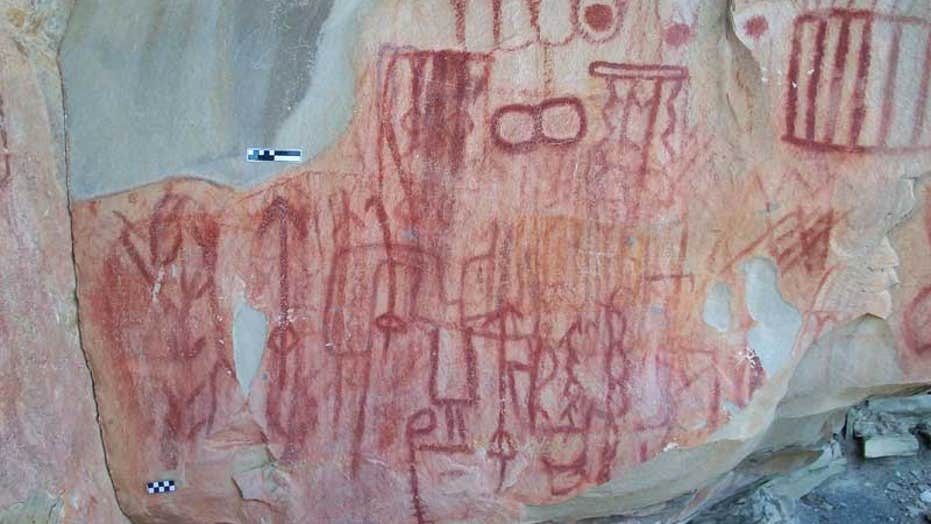Researchers in Mexico have discovered caves etched with thousands of well-preserved paintings – including a wall with 1,550 different scenes.
Researchers from the country’s National Institute of Anthropology and History (INAH, in Spanish) found the 4,926 paintings spread across 11 caves. The drawings depict humans, animals and insects, as well as skyscapes and abstract scenes in red, yellow, black and white.
While the archeologists still need to chemically analyze the paint to determine an approximate age for the paintings, it is believed that the artwork was created by at least three groups of hunter-gatherers living in Mexico’s San Carlos mountain range.
"We have not found any ancient objects linked to the context, and because the paintings are on ravine walls and in the rainy season the sediments are washed away, all we have is gravel," archaeologist Gustavo Ramirez said in an INAH press release.
The findings shocked the archeological world because they suggest the presence of a pre-Hispanic people living in an area generally considered devoid of human habitation. Despite the find, however, there is still very little known about the groups that lived in the region.
- New Maya Temple Found in Guatemala Intrigues Archaeologists
- Mexico Bill Loosens Restrictions On Foreigners Buying Land
- Mexico’s Zetas Cartel Recruiting Americans Since 2010
- Mexico’s Government Hit By New Scandal Over Restaurant Seating
- Mexico To Create ‘Missing People’ Police Force
- Best Pix Of The Week
- Best Sports Pix Of The Week
- Mayan Mural Found in Family Kitchen
"These groups escaped the Spanish rule for 200 years because they fled to the Sierra de San Carlos where they had water, plants and animals to feed themselves," said archaeologist Martha García Sánchez, according to the BBC.
It has been a boom time for archaeology in Mexico. Last month, it was announced that scientists from INAH discovered three new chambers purportedly used by Aztec leaders roughly 2,000 years ago for royal ceremonies or burials inside of Mexico City’s Temple of Quetzalcoatl, at the archaeological site of Teotihuacan.
Along with finding three new chambers, INAH archaeologist came across hundreds of mysterious metal spheres with an unknown purpose.
"We cannot yet establish its role because it is an unprecedented discovery. They should have a sphere, ranging from 4 to 12 inches and have a core of clay with organic matter, then covered them with pyrite, a mineral that underwent a process of oxidation and became jarosite, hence have a tone yellow," archaeologist Jorge Zavala said, according to the INAH.
Follow us on twitter.com/foxnewslatino
Like us at facebook.com/foxnewslatino

